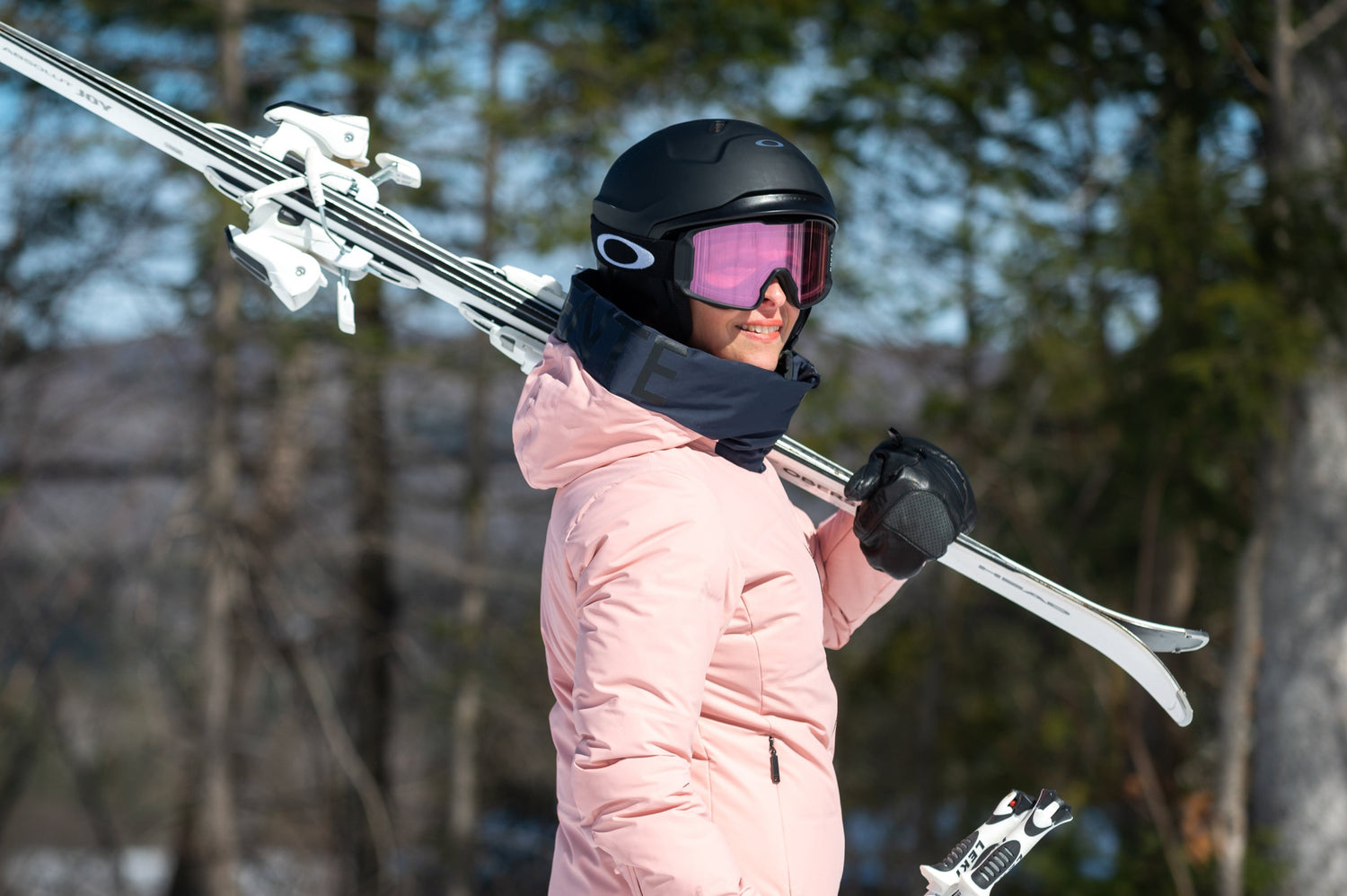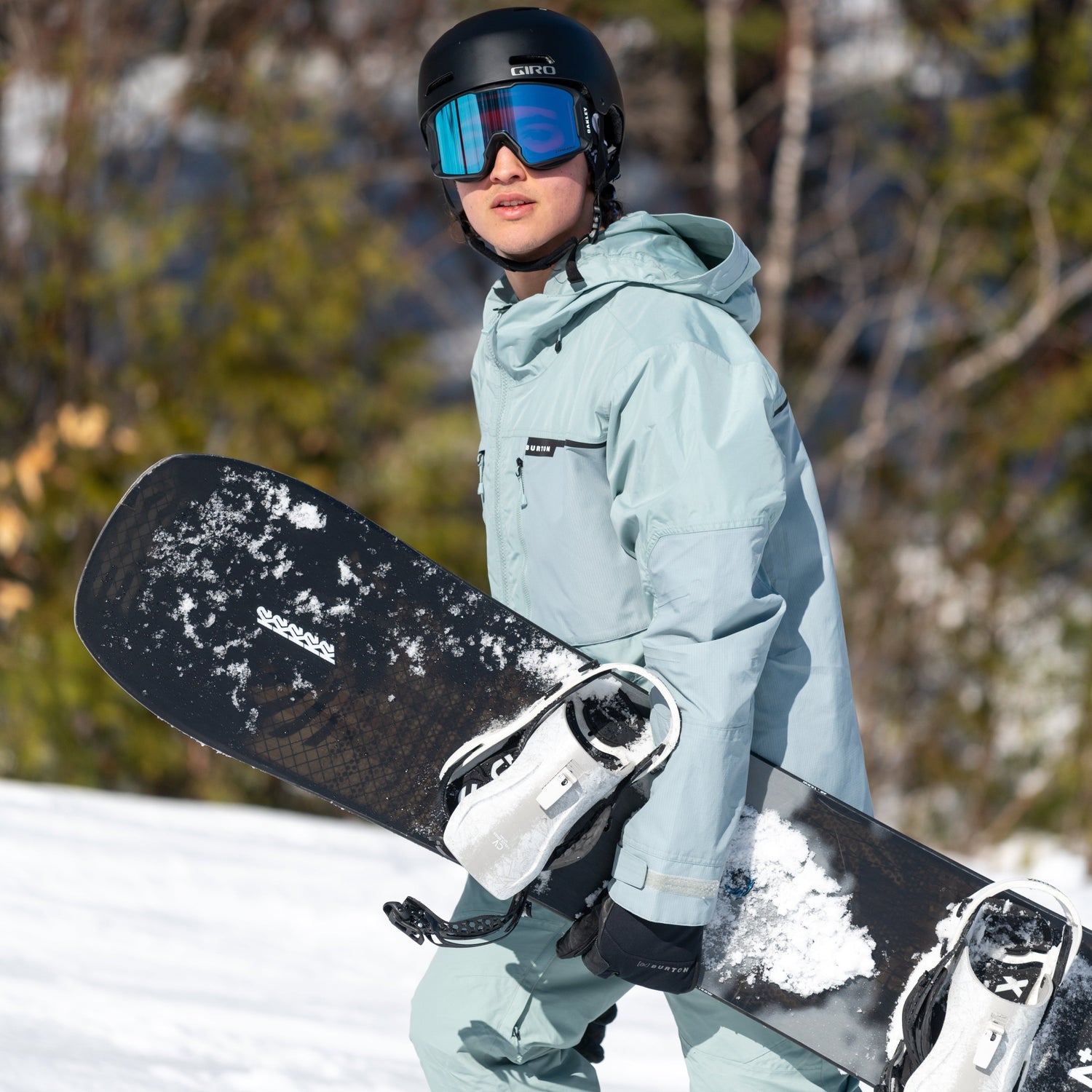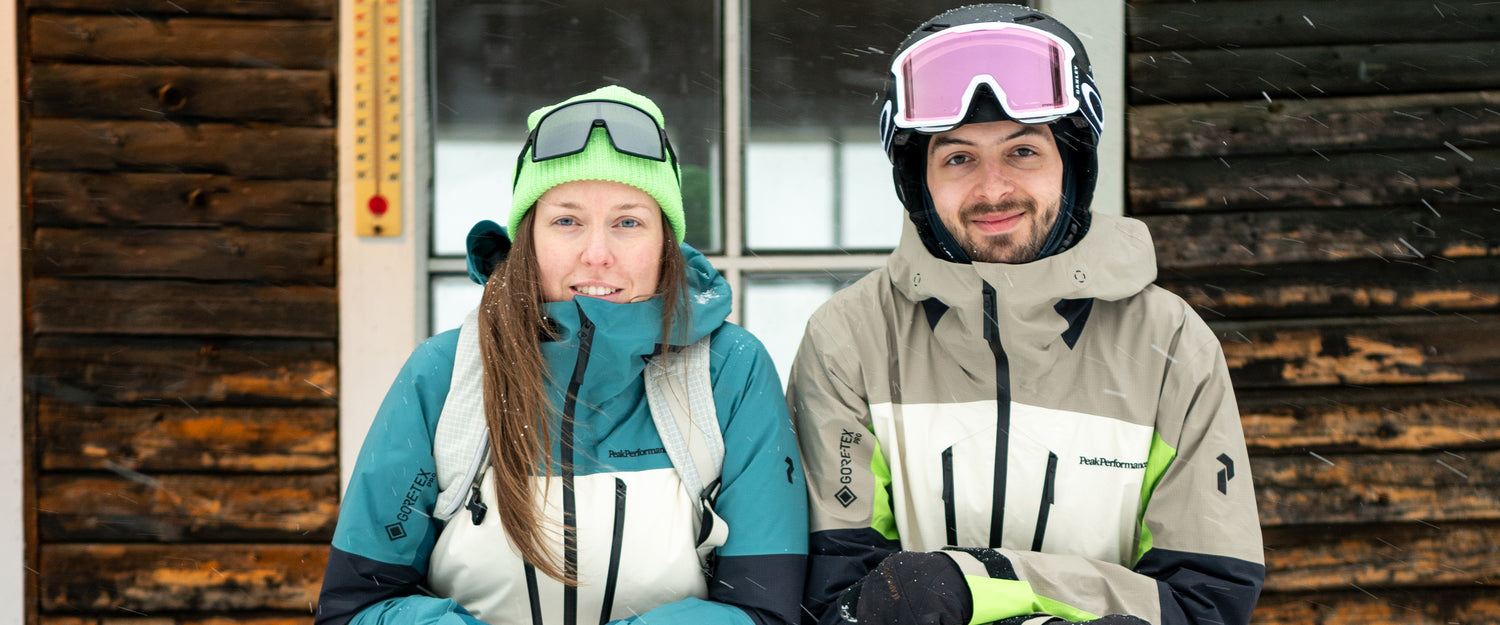1. Alpine Touring Gear
- Choosing Alpine Touring Skis
Your skis are, of course, one of your main pieces of equipment. Many people use alpine touring skis that are different from their resort skis. Backcountry skis are lighter because they need to be efficient and nimble to climb mountains. However, their weight sometimes makes them less effective and aggressive going downhill on hard surfaces.
- What Width Do You Need for Backcountry Skis?
At the waist, they’re between 82 mm and 102 mm wide. Depending on your preferences, fitness level and usual type of outing, you may go with wider skis that are geared towards freeriding, which are generally heavier. To choose the right length alpine touring skis, consult our chart in How to Choose Your Ski Size.
Before making your purchase, consider the types of terrain where you’ll mainly ski. Many ski resorts now offer uphill trails to access their downhill runs. If you go ski touring mainly at resorts, you may not need a very light ski. In this case, a freeride ski is perfect if paired with an alpine touring or hybrid binding.
If you want to find the right type of ski for you, see our article Types of Alpine Skis: How to Make Your Choice?.

- How to Choose Alpine Touring Boots?
Two options are available for AT boots. The first one is for those who want to have a single piece of equipment to ski at the resort and venture into the backcountry a few times during the season. Hybrid boots are designed for both downhill skiing and touring. You can use them with both a normal downhill ski binding and the pin tech system found on alpine touring bindings. In addition, hybrid boots have a walk mode for moving about and climbing. They’re highly versatile and can be an outstanding option for getting started in alpine touring.
The second option is for those who spend most of their time in the backcountry and have a second set of gear for resort skiing. Boots designed for alpine touring feature the insert tech system, which has holes located at the toes and heel. These holes are compatible with the binding’s pin tech system. These boots are lighter and have a release mechanism on the cuff—for walk mode—to give them the mobility needed to climb skin trails. Lightness is essential when climbing but can compromise power during descents.
- How to Choose Alpine Touring Bindings?
As with boots, two options are available: hybrid bindings and AT bindings. A hybrid binding, such as the Salomon Shift or Atomic Shift, can be used both at resorts and for a day of backcountry skiing.
AT bindings aim to give the most possible mobility for ascents while maintaining a good level of power and precision on the way down. They feature the pin tech system—metal tips on the toe and heel pieces that are inserted into the boots’ insert tech holes. The Tecton Fritschi binding from Black Diamond is a good example. To learn more about AT bindings, read our article How to Choose the Right Alpine Touring Binding?

- Poles for Alpine Touring
To be able to adapt to various terrains and situations in the mountain, you’ll need telescopic poles. Since skiing in fresh snow is the day’s goal more often than not, your poles should be equipped with powder baskets. You can even use your telescopic poles at the resort. And why not use them for snowshoeing too?
2. Splitboarding Gear
- How to Choose a Splitboard?
The touring option for snowboarders? Splitboards. As the name suggests, splitboards split lengthwise into two pieces that can be used as skis. This system lets riders travel over snow and climb skin trails. Once at the top, you put the two pieces back together. They stay in place thanks to a system of fasteners or clips that hold the board together. The result? A snowboard for the way down!
When it comes to splitboards’ shapes and flexes, think about the type of terrain you’ll most often be surfing. If you’ll be climbing ski resorts’ uphill trails and riding their runs most of the time, a stiffer board with a rocker-camber profile gives you more versatility if you encounter hardpack. If the backcountry, western mountains and powder are calling your name, a splitboard with nose and tail rocker will be nimble and keep you afloat. To get the right gear, read our article What do You Need for a Splitboarding Season?

- How to Choose Splitboard Boots?
There are more and more models of splitboard boots on the market. The difference with snowboard boots is mainly in the stiffness, sole type and touring-oriented features.
Splitboard boots typically have a flap over your foot to protect against snow that might get in, Vibram soles, and a walk mode in the boot’s cuff to give greater mobility for climbing. TM-2 Jones boots from thirtytwo are a great example of splitboard boots.

- How to Choose Splitboard Bindings?
Splitboard bindings are different from snowboard bindings. They are generally designed to be highly durable because they will be handled often during transitions.
The way they work is simple. Once the board is split in two, the toe end attaches to components installed on mounting points. Since only this part is attached to the board, the heel is free so you can make a forward pushing movement for travel. Once you have transitioned and put the splitboard parts back together, a system of pucks made of composite materials allows the splitboard bindings to slide into position for the descent.
Are you intrigued about the use of splitboards and splitboard bindings? Learn how they work in our pro video clip.
- Telescopic Poles for Splitboarding
For splitboarding, telescopic poles should fold into three parts to make them easier to store on the side of your touring backpack without sticking out.

3. How to Dress for Alpine Touring?
Keep in mind that on your trips into the backcountry, you’ll often be hot. You can even overheat. Dressing in layers is ideal. Wearing multiple layers allows you to take them off or put them on based on how hard you’re working and the temperature. A high-performance base layer made of synthetic fibres will wick away moisture.
An effective base layer made of synthetic fibres is ideal because it wicks moisture well and dries quickly. For mid layers, synthetic insulation doesn’t get soaked the way down does. You can carry a mid layer in your backpack and wear a thinner, lighter one over your base layer.
As the outer layer, your shell jacket and shell pants are your protection against the elements. You can even carry an oversized insulated jacket to wear over your shell during transitions. That way, you’ll be warm when eating your sandwich in the sun or transitioning on an exposed, windy summit.
As for accessories, the essentials are thin gloves for climbs and mittens for descents. They can get wet fast, so it’s ideal to bring multiple pairs in your touring backpack.
To find out how to dress in layers, see our article How to Dress for Ski Touring?

4. How to Choose Climbing Skins for Alpine Touring?
To reach the top of your favourite mountain, you need climbing skins. Made of synthetic hairs, natural mohair or a combination of the two, skins offer glide and grip to travel on skin tracks or blaze your own trail.
It’s important to choose the right skins for your gear, either for alpine touring skis or a splitboard. The attachments and sizes differ.
To learn more about climbing skins, see our article How to Choose Climbing Skins.
5. How to Choose a Ski Helmet?
Since you won’t be wearing your ski helmet for the uphills, you can use your alpine ski helmet. However, if you want a very lightweight, ventilated helmet that complies with safety standards for mountaineering and climbing, you can get a touring-oriented helmet, such as the Backland helmet from Atomic.
Need a new helmet? Find all our advice in our article How to Choose the Right Ski Helmet?.

6. Ski Goggles
Your ski goggles will be critical during your adventures. Because light varies throughout the day, ski goggles with interchangeable lenses are a great option because they give you clear vision regardless of the weather. There are no specific goggles for touring. The ones you already have will definitely do the job.
To make a choice that meets your needs, see our article How to Choose Ski Goggles?.
7. How to Choose the Right Alpine Touring Backpack?
Well-prepared explorers always have their backpacks! Since it needs to hold as much as possible in an organized way, the ideal touring backpack should have at least a 30-litre capacity. This must-have item should hold enough water, food, clothing and equipment, and accessories along with a screwdriver, a first aid kit and avalanche safety equipment for some trips.
A good touring backpack is comfortable, supportive, waterproof and durable. It should have several easily accessible pockets. Most models have ski attachments in case you need to bootpack or walk. Since you don’t wear your helmet on the way up, an external attachment system to hang it is always a good option to free up space in the pack’s main pocket. To make the right choice, read our Buyer's Guide for Alpine Touring Backpacks.

8. Safety in Avalanche Terrain: Equipment and Training
For adventurous souls heading into the backcountry, owning AND knowing how to use avalanche safety equipment is man-da-tor-y when visiting avalanche-prone areas. Theoretical and practical concepts related to probes, shovels and avalanche beacons are taught in avalanche skills training.
In addition, to navigate the backcountry safely, nothing beats wilderness first aid training.
9. How to Get into Alpine Touring?
Finally, if you want to try alpine touring, many ski resorts offer beautiful sectors with uphill trails that enable you to descend on their runs. This option lets you become familiar with your gear in a patrolled area. In addition, there are some beautiful areas outside ski resorts. To learn about some of them, read our article 7 Places to Learn Backcountry Skiing in Quebec.
In addition, some communities, such as the Chèvres de Montagne organize introductory alpine touring activities specifically for women in several regions of Quebec.



